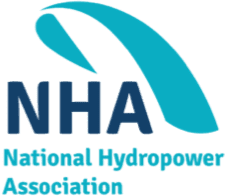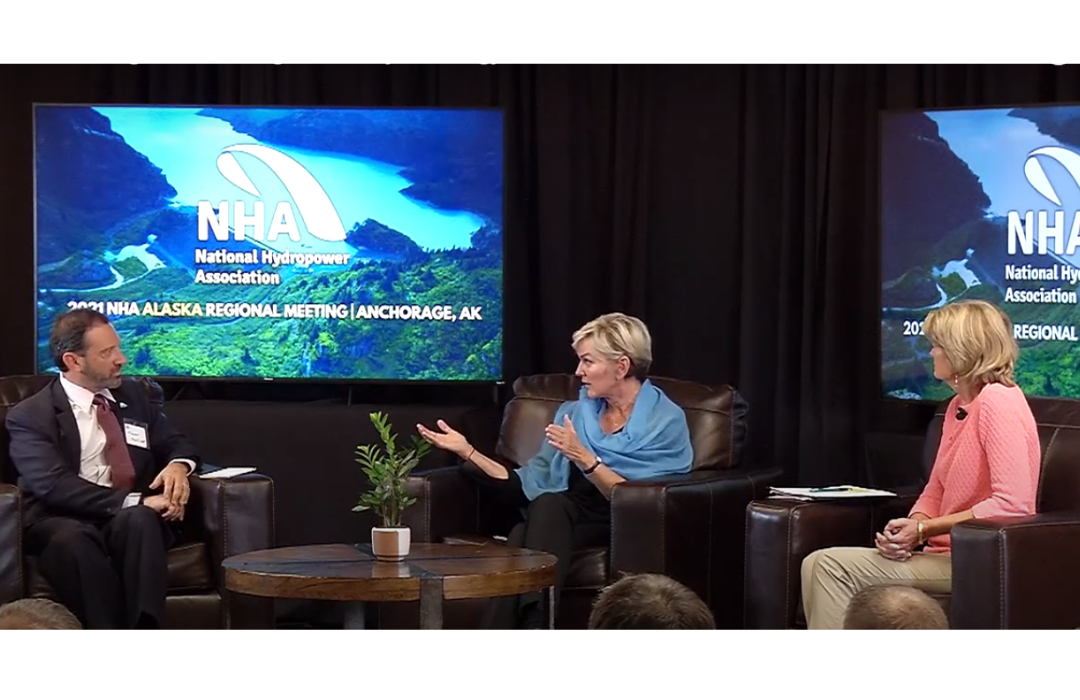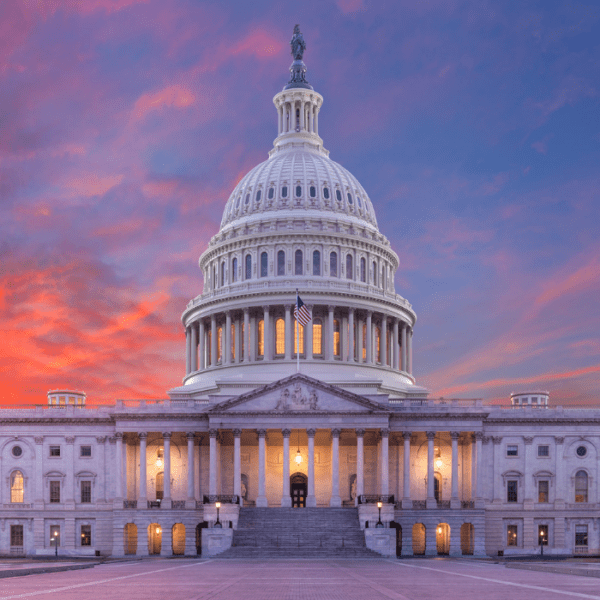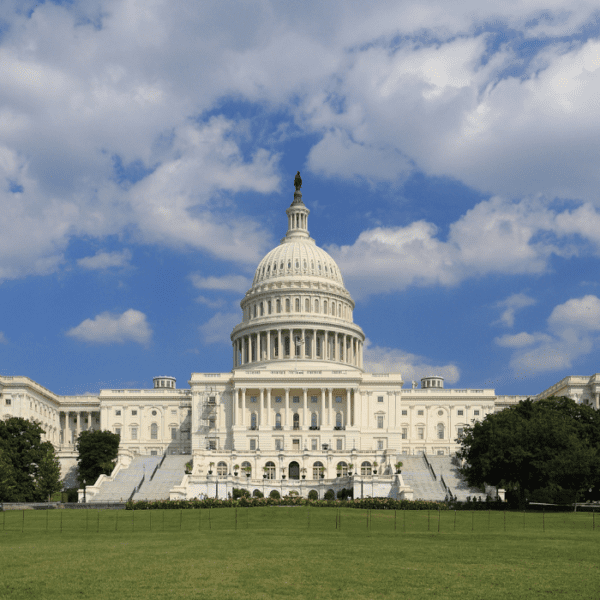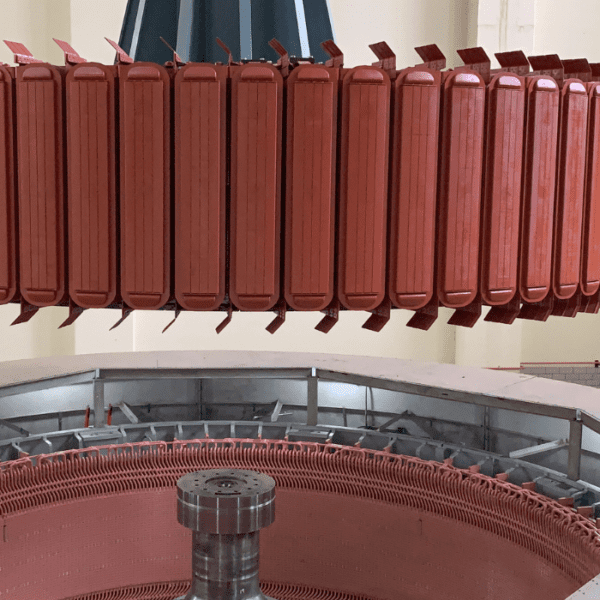Hydro, in all its various forms, is significant … even critical … as the United States works to meet clean energy goals.
That’s one conclusion articulated during a broad-ranging discussion at the National Hydropower Association’s Alaska Regional Meeting on August 16, 2021, with U.S. Department of Energy Secretary Jennifer Granholm and Alaskan Senator Lisa Murkowski. Both shared their views about the value of hydro to a clean energy grid, infrastructure legislation, marine energy, and the uniqueness of Alaska.
Granholm is the 16th secretary of the U.S. Department of Energy. She is the second woman to lead the department. Under President Biden’s administration, Granholm is leading the effort to implement the vision of having a 100% clean energy grid by 2035.
Murkowski, the senior Senator of Alaska, is a third-generation Alaskan. She is serving as the first Alaskan-born senator. She is stalwart champion of waterpower.
You can watch the entire discussion the National Hydropower Association’s President and CEO Malcolm Woolf had with the Secretary and Senator on the NHA website.
Role of Hydro: Can’t Meet Clean Energy Goals without It
During the discussion, Granholm made it clear that the focus on clean energy is urgent; both the Secretary and Senator agreed that the United States cannot meet its clean energy goals without hydro.
“My hair is on fire about this – we have to add gigawatts of clean electricity to the grid and we have to maintain the ones we’ve got,” Granholm said. “We have got to get serious about the build out and the maintaining.”
And, Murkowski added that “you can’t do it” without hydro.
“You’ve got to make sure hydropower is not viewed as yesterday’s energy solution,” Murkowsi said. “Hydro is part of the broader portfolio package.” She even quipped a re-branding campaign may be in order – “maybe we call hydro the ‘sexy baseload.’”
Murkowski also cautioned about the potential risk the U.S. faces as 30% of non-federal hydro fleet in the nation is up for license renewal (Federal Energy Regulatory Commission relicensing) over the next decade. Through that renewal process, Murkowski says maintaining existing megawatts is crucial. “We can’t be in a situation where we see hydro go off line at a time as we are trying to meet clean energy goals.”
Infrastructure Legislation
Both Granholm and Murkowski spoke of the importance of the legislation currently being considered by Congress to provide incentives for increasing investment in infrastructure.
Murkowski urged the industry to voice support for the 30% tax credit for hydro in the bipartisan legislation she is sponsoring with Senator Maria Cantwell. “First and foremost, it is imperative that the industry speak with one voice in terms of the significance and the importance of this [tax support],” Murkowski said.
Granholm said DOE is especially interested in the retrofit-related incentives in the infrastructure legislation passed by the Senate and now being considered by the House. She specifically referenced grants for adding hydropower to existing dams. “There’s 90,000 dams in this country, but only 2,500 of them have hydropower. We want to make sure as many of those that can go forward, can.”
Granholm complimented the approach of industry and river and environmental communities coming together to create solutions that benefit all concerned. “The notion of bringing together unusual partners, unusual bedfellows, to create something that is powerful is fantastic,” Granholm said. “I applaud Dan Reicher and the whole effort of the Uncommon Dialogue.”
Marine Energy
The Senator spent time talking about the massive potential for marine energy-related development. “33,000 miles of coastline,” she emphasized, referring to the state of Alaska’s extraordinary access to both coastlines and rivers. “We have the resources,” Murkowski said. “Whether it’s In-river, tides, the potential is massive.”
Secretary Granholm concurred about the potential. “We are very bullish on marine power,” she said.
She specifically mentioned a recent DOE announcement to fund testing of marine energy technologies at the PacWave testing facility, being constructed off the coast of Oregon.
Alaska: A Living laboratory for ‘Place-Based’ Solutions
Bringing the discussion to a local level, Murkowski was clear that the role of hydro in Alaska’s clean energy grid is only going to increase. She explained how the use of the indigenous resource in a local community empowers that community to reduce electricity costs and meet its own needs in its own ways. “When we put into context the sustainability that comes to a community when it has access to the power source that is there, all of a sudden, you are on the map,” Murkowski said.
The specific solution is going to be different in each location, depending on where you are in the state and what the resources are in that particular place, Murkowski explained. The Senator also applauded the ingenuity of innovators in the state to build out solutions, at scale, for their specific communities.
Alaska, as Murkowski pointed out, is “islanded” because the geography dictates it; the state is also islanded when it comes to electricity delivery. Thus, the closer to specific solution to provide local power, the more sustainable the community becomes.
Recommended Viewing:
At 5:30: The secretary makes a passionate, strong statement: “Hydropower – reliable, baseload, clean power that is dispatchable – is critical if we are going to meet these goals [of a zero carbon grid]. – Sen. Granholm
At 10:30: The senator shares her views about waterpower in Alaska: “I view the role that hydro plays in our state [of Alaska] as only continuing to grow in significance and importance…. Right now, 25% of Alaska’s power is renewable and the vast majority comes from hydropower. That’s only going to continue to grow … as it should” – Sen. Murkowski
At 19:28: The senator on the value hydro brings as a baseload source: “Hydropower “is not yesterday’s energy solution. This is, as the Secretary said, this is that baseload source of power that can help knit together so much. … Where’s your saving grace here? It’s in that baseload power. It’s in hydropower.” – Sen. Murkowski
At 29:19: Exchange between the Senator and Secretary about the Department of Energy’s focus on all types of waterpower

